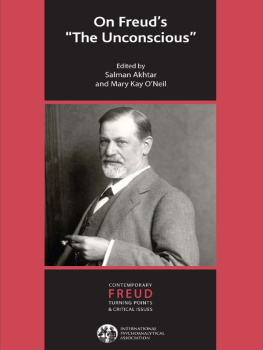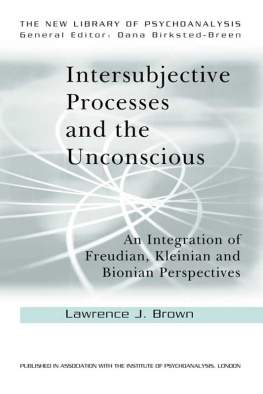SERIAL KILLER TED BUNDY
Dr. V.V.L.N. Sastry
Table of Contents
About the Book
B undys criminal behavior as a serial killer can be explained in terms of Freuds psychological theory. According to Freud, a persons behavior comes about because of interactions between three aspects of his or her personality including the superego, ego, and id. Id drives instinct and controls what a person does from birth. There are both constructive and destructive instinctual drives. A persons ego moderates his or her instinctual drive while the superego is needed for a persons development during which he or she learns the values of society. As Freud puts it, large portions of ego and superego can remain unconscious, making an individual unaware of whatever he or she is doing (Ahmed, 2012). Examples of unconscious experiences include disturbing memories and extreme sexual behaviors. If the person becomes aware of these unconscious experiences, he or she is likely to engage in destructive behavior. It can be concluded that Bundys ego and superego may have been unconscious when he was committing initial criminal activities. However, when his awareness was restored, he responded by even more destructive behavior like when he decided to kidnap and kill more than one lady during the day (Ahmed, 2012). This book analyses the serial killer Ted Bundy.
 G raduate in Technology , Dr.V.V.L.N.Sastry. Sastry, holds M.B.A, LL.M, ACMA (India), FCMA (CIMA, UK), M.Sc in Information Systems and Management from University of Roehampton, Ph.D in Banking, Ph.D in Computer Science, Ph. D in Financial Management, and Ph.D in Criminal Law and Public Policy from Walden University, U.S.A. Sastry, brings over 20 years of experience in the banking, investment banking, software industry and law. He is the author of more than 1000 published articles on varied subjects in the areas of IT, Banking, Finance, Economics and Law. He also has authored several books in the said fields. Rated among the top researchers in the worldwide applied academics by www.academia.edu, his applied research contributions are well received across the world.
G raduate in Technology , Dr.V.V.L.N.Sastry. Sastry, holds M.B.A, LL.M, ACMA (India), FCMA (CIMA, UK), M.Sc in Information Systems and Management from University of Roehampton, Ph.D in Banking, Ph.D in Computer Science, Ph. D in Financial Management, and Ph.D in Criminal Law and Public Policy from Walden University, U.S.A. Sastry, brings over 20 years of experience in the banking, investment banking, software industry and law. He is the author of more than 1000 published articles on varied subjects in the areas of IT, Banking, Finance, Economics and Law. He also has authored several books in the said fields. Rated among the top researchers in the worldwide applied academics by www.academia.edu, his applied research contributions are well received across the world.
T ed Bundy, initially known as Theodore Robert Cowell is one of the most famous serial killers in the United States. The motivation for this paper is to understand the potential social, environmental, biological, genetic, and psychological factors that contributed to Bundys criminal behaviors. Born in 1946, Ted Bundy grew up without knowing the identity of his father. During his early years, Ted Bundys mother took him to her parents who he later thought to be her real parents. In order to drive away the shame, Bundys mother made him understand that she was actually his older sister. Bundy was an obedient and respectful child who also performed well in school. He even qualified to join University where he pursued a degree course in psychology and eventually law. It is during his university life when Ted Bundy fell in love with a young lady for the first time. Unfortunately, they broke up, and Bundy was highly devastated. Just a few months after the break-up, Bundy discovered that his older sister and parents were actually his mother and grandparents respectively (Pedneault, 2002).
Bundy was a serial killer who continuously assaulted and brutally murdered young women. He committed serial murders in the Washington State, Utah, Colorado, Idaho, and Florida before his arrest. The first assault committed by Bundy was confirmed on January 4th, 1974 when he entered the bedroom of a female dancer and student aged 18 years. Bundy sexually assaulted the girl before beating her with a metal rod. This lady was from the University of Washington. Although the girl did not die from the beating, her brain was permanently damaged. In the same month, Bundy killed another female student from the University of Washington before dumping her body in a separate location. Two months later, he kidnapped and murdered another female student aged 19 years. Bundys next attack was in April 1974 when he lured and killed another lady from Central Washington State College. He later killed two more university female students in the months of May and June 1974 (Pedneault, 2002).
In July the same year, Bandy changed his tactics for committing crime from abducting female students during the night to kidnapping them during the day. On the same day, Bundy abducted and murdered two ladies by luring them to help him unload some luggage from his Volkswagen Beetle. The two females were from Washington States Lake Sammamish State Park. Following all these murders in the Washington State, police officers began to hunt for a criminal they had very little information about. They distributed Ted Bundys sketches and descriptions to television and newspaper stations. Bundys girlfriend, Ann Rule, later reported to the police that Ted Bundy was a possible suspect. However, they ignored the report due to the fact that Bundy was a law student (Pedneault, 2002).
Towards the end of 1974, Ted relocated to Utah to continue with his studies in Salt Lake City. While in Utah, Bundy continued to kill young females, this time, not university students. He managed to capture his victims by pretending that he was a police officer conducting a criminal investigation. Unfortunately, Bundy did not succeed in all his murder attempts because two ladies escaped before they were killed. This did not discourage him, he went on to kill another female student aged 17 years when she was going to pick her brother from school. After killing several ladies in Utah, Bundy decided to target ladies from Colorado and Idaho because he had been spotted by Utah residents. He killed four separate ladies in Colorado and Idaho between January and May 1975 (Pedneault, 2002).
Bundy was arrested in 1975 in Utah when he failed to stop for a police check. Police searched his car and they found burglary tools such handcuffs, a crowbar, and a ski mask. His car was linked to the other murders and abductions in Utah making the police officers to treat his case as that of murder. He was convicted of murder in March 1976, but he later escaped in 1977. After six days, Bundy was brought back to jail where he escaped again seven months later. This time, Bundy moved to Florida where he attacked four female university students in January 1978 and later killed another one in February the same year. He was arrested less than a week later before he was executed on January 24th 1989. Bundy confessed to have assaulted and murdered 35 young ladies (Pedneault, 2002).
Next page

















 G raduate in Technology , Dr.V.V.L.N.Sastry. Sastry, holds M.B.A, LL.M, ACMA (India), FCMA (CIMA, UK), M.Sc in Information Systems and Management from University of Roehampton, Ph.D in Banking, Ph.D in Computer Science, Ph. D in Financial Management, and Ph.D in Criminal Law and Public Policy from Walden University, U.S.A. Sastry, brings over 20 years of experience in the banking, investment banking, software industry and law. He is the author of more than 1000 published articles on varied subjects in the areas of IT, Banking, Finance, Economics and Law. He also has authored several books in the said fields. Rated among the top researchers in the worldwide applied academics by www.academia.edu, his applied research contributions are well received across the world.
G raduate in Technology , Dr.V.V.L.N.Sastry. Sastry, holds M.B.A, LL.M, ACMA (India), FCMA (CIMA, UK), M.Sc in Information Systems and Management from University of Roehampton, Ph.D in Banking, Ph.D in Computer Science, Ph. D in Financial Management, and Ph.D in Criminal Law and Public Policy from Walden University, U.S.A. Sastry, brings over 20 years of experience in the banking, investment banking, software industry and law. He is the author of more than 1000 published articles on varied subjects in the areas of IT, Banking, Finance, Economics and Law. He also has authored several books in the said fields. Rated among the top researchers in the worldwide applied academics by www.academia.edu, his applied research contributions are well received across the world.